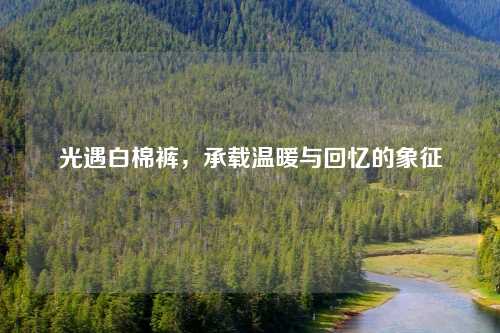luodai,泰山谁知道英文介绍?
Mount Tai (Chinese: 泰山; pinyin: Tài Shān) is a mountain of historical and cultural significance located north of the city of Tai'an, in Shandong Province, China. The tallest peak is Jade Emperor Peak (simplified Chinese: 玉皇顶; traditional Chinese: 玉皇顶; pinyin: Yùhuáng Dīng), which is commonly reported as 1545 metres (5069 feet) tall[1], but is described by the Chinese government as 1532.7 metres (5028.5 feet)[2].Mount Tai is one of the "Five Sacred Mountains of Taoism". It is associated with sunrise, birth, and renewal, and is often regarded the foremost of the five. The temples on its slopes have been a destination for pilgrims for 3,000 years.Contents [hide]1 Location 2 History 3 Natural significance 4 Cultural significance 4.1 Dai Miao 4.2 Other Monuments 5 Infrastructure 6 Cultural references 7 Footnotes 8 External links [edit] Location Location within ChinaMount Tai is located just north of the city of Tai'an and to the south of the provincial capital Jinan. It extends from 150 to 1,545 metres above sea level and covers an area of 426 square kilometres at its base. The Jade Emperor Peak is located at 36° 16′N and 117° 6′E.[edit] HistoryTraces of human presence at Mount Tai date back to the Paleolithic period. Human settlement of the area can be proven from the neolithic period onwards. During this time, two cultures had emerged near the mountain, the Dawenkou to the north and Longshan to the south. In the Spring and Autumn Period, the mountain lay on the boundary between the competing States of Qi (north of the mountain) and Lu (south). In the ensuing Warring States Period, the State of Qi erected a 500 km-long wall to protect itself against an invasion. Ruins of this wall are still present today. The name Tai'an of neighboring city is attributed to the saying "If Mount Tai is stable, so is the entire country" (both characters of Tai'an, 泰安, have independent meaning "peace").Religious worship of Mount Tai has a tradition of 3,000 years, it has been practiced from the time of the Shang to that of the Qing Dynasty. Over time, this worship evolved into an official imperial rite and Mount Tai became one of the principal places where the emperor would pay homage to Heaven (on the summit) and Earth (at the foot of the mountain) in the Fengshan Sacrifices (封禅). In 219 BC, Qin Shi Huang, the first Emperor of China, held a ceremony on the summit and proclaimed the unity of his empire in a famous inscription.Mount Tai has been a UNESCO World Heritage Site since 1987. In 2003, it attracted around 6 million visitors. A renovation project to be completed by late October 2005 aims at restoring cultural relics and the renovation of damaged buildings of cultural significance. Modern buildings which are inconsistent with the historic landscape are to be demolished. The total cost of the work is estimated at 15 million yuan (approximately US$1.8 million).[edit] Natural significance The Immortal Bridge, a natural landscapeMount Tai is a tilted fault-block mountain with height increasing from the north to the south. It is the oldest example of a paleo-metamorphic formation from the Cambrian Period in eastern China. Known as the Taishan Complex, this formation contains magnetized, metamorphic, and sedimentary rock as well as intrusions of other origins during the Archean Era. The uplift of the region started in the Proterozoic Era, by the end of the Proterozoic, it had become part of the continent.Besides the Jade Emperor Peak, other distinctive rock formations are the Heaven Candle Peak, the Fan Cliff, and the Rear Rock Basin.Mount Tai lies in the zone of oriental deciduous forest; about 80% of its area is covered with vegetation. The flora is known to comprise almost 1,000 species. Some of the trees in the area are very old and have cultural significance, such as the Han Dynasty Cypresses, which were planted by the Emperor Wu Di, the Tang Chinese Scholartree (about 2,100 years old), the Welcoming-Guest Pine (500 years old) and the Fifth-Rank Pine, which was named originally by the Emperor Qin Shi Huang, but was replanted about 250 years ago.[edit] Cultural significance[edit] Dai Miao Dai Temple at Mount TaiThe Temple of the God of Mount Tai, known as the Dai Temple (Dai Miao) is the largest and most complete ancient building complex in the area. It is located at the foot of Mount Tai in the city of Tai'an and covers an area of 96,000 square meters. The temple was first built during the Qin Dynasty. Since the time of the Han Dynasty (206 BC - 220 AD), its design has been a replica of the imperial palace, which makes it one out of three extant structures in China with the features of an imperial palace (the other two are the Forbidden City and the Confucius Temple in Qufu). The temple has five major halls and many small buildings. The centerpiece is the Palace of Heavenly Blessings (Tian Kuang), built in 1008, during the Northern Song Dynasty. The hall houses the mural painting "The God of Mount Tai Making a Journey", dated to the year 1009. The mural extends around the eastern, western and northern walls of the hall and is 3.3 metres high and 62 metres long. The theme of the painting is an inspection tour by the god. Next to the Palace of Heavenly Blessings stand the Yaocan Pavilion and the entrance archway as well as the Bronze Pavilion in the northeast corner. The Dai Temple is surrounded by the 2,100 year-old Han Dynasty cypresses.Dong Yue Temple at Mount Tai[edit] Other MonumentsA flight of 7,200 total steps (including inner temple steps), with 6,293 Official Mountain Walkway Steps, lead up the East Peak of Mount Tai, along its course, there are 11 gates, 14 archways, 14 kiosks, and 4 pavilions.In total, there are 22 temples, 97 ruins, 819 stone tablets, and 1,018 cliff-side and stone inscriptions located on Mount Tai. These include the Azure Cloud Temple dedicated to the daughter of the God of Mount Tai, the goddess Laomu and the Divine Rock Temple which features the Thousand-Buddhas Hall with painted Arhat statues.[edit] Infrastructure Zeng Fu Temple at Mount Tai Stone inscriptions at Mount TaiVisitors can reach the peak of Mount Tai via a bus which terminates at the Midway Gate to Heaven, from there a cable car connects to the summit. Covering the same distance on foot takes from two and a half to six hours. The supplies for the many vendors along the road to the summit are carried up by porters either from the Midway Gate to Heaven or all the way up from the foot of the mountain.To climb up the mountain, one can take one of two routes. The more popular east route starts from Taishan Arch. On the way up the 7,200 stone steps, the climber first passes the Ten Thousand Immortals Tower (Wanxianlou), Arhat Cliff (Luohanya), and Palace to Goddess Dou Mu (Doumugong). The climbing from downtown up the mountain can take two and a half hours for the avid hiker to six hours for the leisure pace. To the northeast of the Palace to Goddess Dou Mu is Sutra Rock Valley in which the Buddhist Diamond Sutra was cut in characters measuring fifty centimeters across believed to be inscribed in the Northern Wei Dynasty. The west route, taken by fewer tourists, is more scenic, but has less culture heritage.[edit] Cultural referencesThe Chinese idiom "泰山北斗" (lit. Mount Tai & Big Dipper) is an epithet for a person of great distinction. According to an ancient quotation from Sima Qian, "Though death befalls all men alike, it may be weightier than Mount Tai or lighter than a feather." Mao Zedong referenced this quote in the 20th century: "To die for the people is weightier than Mount Tai, but to work for the fascists and die for the exploiters and oppressors is lighter than a feather". [1] Rage Against the Machine referenced this in the song "Year of tha Boomerang": "So I'm goin' out heavy sorta like Mount Tai". In 1987, Canadian progressive rock band Rush put out the Hold Your Fire album, containing the song "Tai Shan." The song was about drummer and lyricist Neil Peart's journey to Mount Tai. The Dai Miao is featured in Sid Meier's Civilization IV as a religious complex that can be built by a Great Prophet, thus establishing a holy shrine dedicated to Taoism in the Taoist holy city. Tai Shan is the name of the most popular beer of most of Western Shandong province. A popular Vietnamese saying Công cha như núi Thái Sơn, nghĩa mẹ như nước trong nguồn chảy ra, một lòng thờ mẹ kính cha, cho tròn chữ hiếu mới là đạo con, mentions Thai Son mountain which may be translated into Chinese as Tai Shan, and refers a father's work ethics to the grandeur of the mountain
全面战争天可汗城市代码?
C-0101-a-BeiPing} 幽州

{C-0101-b-BeiPing} 幽州·北平
{C-0102-a-XiangPing} 辽东郡
{C-0102-b-XiangPing} 幽州·襄平
{C-0103-a-LiaoXi} 辽西郡
{C-0103-b-LiaoXi} 幽州·辽西
{C-0104-a-DaiXian} 代郡
{C-0104-b-DaiXian} 幽州·代县
{C-0105-a-FanYang} 笵阳郡
{C-0105-b-FanYang} 幽州·笵阳
{C-0106-a-ChangLi} 昌黎郡
{C-0106-b-ChangLi} 幽州·昌黎
{C-0201-a-TaiYuan} 太原郡
{C-0201-b-TaiYuan} 并州·晋阳
{C-0202-a-ShangDang} 上党郡
{C-0202-b-ShangDang} 并州·上党
{C-0203-a-XiHe} 西河郡
{C-0203-b-XiHe} 并州·西河
{C-0204-a-XinXing} 新兴郡
{C-0204-b-XinXing} 并州·新兴
{C-0205-ag-YanMenGuan} 雁门郡
{C-0205-bg-YanMenGuan} 并州·雁门关
{C-0206-ag-HuKouGuan} 乐平郡
{C-0206-bg-HuKouGuan} 并州·壶口关
{C-0301-a-YeCheng} 魏郡
{C-0301-b-YeCheng} 冀州·邺城
{C-0302-a-NanPi} 渤海郡
{C-0302-b-NanPi} 冀州·南皮
{C-0303-a-Xindu} 安平郡
{C-0303-b-Xindu} 冀州·信都
{C-0304-a-GuangPing} 广平郡
{C-0304-b-GuangPing} 冀州·广平
{C-0305-a-ChangShan} 常山郡
{C-0305-b-ChangShan} 冀州·常山
{C-0306-a-LeLing} 乐陵国
{C-0306-b-LeLing} 冀州·乐陵
{C-0307-a-LiYang} 黎阳郡
{C-0307-b-LiYang} 冀州·黎阳
{C-0308-a-QingHe} 清河郡
{C-0308-b-QingHe} 冀州·清河
{C-0401-a-LinZhi} 青州
{C-0401-b-LinZhi} 青州·临淄
{C-0402-a-BeiHai} 北海国
{C-0402-b-BeiHai} 青州·北海
{C-0403-a-DongLai} 东莱郡
{C-0403-b-DongLai} 青州·东莱
{C-0404-a-LangYa} 琅琊国
{C-0404-b-LangYa} 青州·琅琊
{C-0405-a-PingYuan} 平原郡
{C-0405-b-PingYuan} 青州·平原
{C-0406-a-ChengYang} 城阳郡
{C-0406-b-ChengYang} 青州·城阳
{C-0501-a-Xiapi} 下邳郡
{C-0501-b-Xiapi} 徐州·下邳
{C-0502-a-GuangLing} 广陵郡
{C-0502-b-GuangLing} 徐州·广陵
{C-0503-a-HuaiLing} 淮陵县
{C-0503-b-HuaiLing} 徐州·淮陵
{C-0504-a-PengCheng} 彭城国
{C-0504-b-PengCheng} 徐州·彭城
{C-0601-a-ChenLiu} 陈留国
{C-0601-b-ChenLiu} 兖州·陈留
{C-0602-a-PuYang} 东郡
{C-0602-b-PuYang} 兖州·濮阳
{C-0603-a-ShanYang} 山阳郡
{C-0603-b-ShanYang} 兖州·山阳
{C-0604-a-LuJun} 鲁国
{C-0604-b-LuJun} 兖州·鲁郡
{C-0605-a-JiYing} 济阴郡
{C-0605-b-JiYing} 兖州·济阴
{C-0606-a-TaiShan} 泰山郡
{C-0606-b-TaiShan} 兖州·泰山
{C-0701-a-XvChang} 颖川郡
{C-0701-b-XvChang} 豫州·许昌
{C-0702-a-RuNan} 汝南郡
{C-0702-b-RuNan} 豫州·汝南
{C-0703-a-Qiao} 谯郡
{C-0703-b-Qiao} 豫州·谯
{C-0704-a-ZhanChun} 蕲春县
{C-0704-b-ZhanChun} 豫州·蕲春
{C-0705-a-XiangCheng} 襄城县
{C-0705-b-XiangCheng} 豫州·襄城
{C-0706-a-YiYang} 弋阳郡
{C-0706-b-YiYang} 豫州·弋阳
{C-0707-a-LuYang} 鲁阳县
{C-0707-b-LuYang} 豫州·鲁阳
{C-0708-a-XiaoPei} 沛国
{C-0708-b-XiaoPei} 豫州·小沛
{C-0709-a-AnFeng} 安丰郡
{C-0709-b-AnFeng} 豫州·安丰
{C-0710-a-WuYin} 舞阴县
{C-0710-b-WuYin} 豫州·舞阴
{C-0711-a-RuYin} 汝阴县
{C-0711-b-RuYin} 豫州·汝阴
{C-0712-a-ChenXian} 陈县
{C-0712-b-ChenXian} 豫州·陈县
{C-0713-a-ZhuiYang} 梁国
{C-0713-b-ZhuiYang} 豫州·濉阳
{C-0801-a-LuoYang} 洛阳 ? ;司州
{C-0801-b-LuoYang} 司隶·洛阳
{C-0802-a-HongLong} 弘农郡
{C-0802-b-HongLong} 司隶·弘农
{C-0803-a-HeNei} 河内郡
{C-0803-b-HeNei} 司隶·河内
{C-0804-a-HeDong} 河东郡
{C-0804-b-HeDong} 司隶·河东
{C-0805-a-PingYang} 平阳郡
{C-0805-b-PingYang} 司隶·平阳
{C-0806-ag-HuLaoGuan} 汞阳郡
{C-0806-bg-HuLaoGuan} 司隶·虎牢关
{C-0807-ag-TongGuan} 潼关地界
{C-0807-bg-TongGuan} 司隶·潼关
{C-0808-ag-GuanDu} 官渡口
{C-0808-bg-GuanDu} 司隶·官渡·隘口
{C-0809-ag-WuGuan} 武关道
{C-0809-bg-WuGuan} 司隶·武关
{C-0901-a-ChangAn} 京兆郡
{C-0901-b-ChangAn} 雍州·长安
{C-0902-a-TianShui} 天水郡
{C-0902-b-TianShui} 雍州·天水
{C-0903-a-ChenCang} 扶风郡
{C-0903-b-ChenCang} 雍州·陈仓
{C-0904-a-LongXi} 陇西郡
{C-0904-b-LongXi} 雍州·陇西
{C-0905-a-NanAn} 南安郡
{C-0905-b-NanAn} 雍州·南安
{C-0906-a-AnDing} 安定郡
{C-0906-b-AnDing} 雍州·安定
{C-0907-a-BeiDi} 北地郡
{C-0907-b-BeiDi} 雍州·北地
{C-0908-a-FengYi} 冯翊郡
{C-0908-b-FengYi} 雍州·冯翊
{C-0909-ag-SanGuan} 祁山
{C-0909-bg-SanGuan} 雍州·散关
{C-0910-ag-JieTing} 陇山
{C-0910-bg-JieTing} 雍州·街亭·隘口
{C-1001-a-WuWei} 武威郡
{C-1001-b-WuWei} 凉州·武威
{C-1002-a-XiPing} 西平郡
{C-1002-b-XiPing} 凉州·西平
{C-1003-a-JinCheng} 金城郡
{C-1003-b-JinCheng} 凉州·金城
{C-1101-a-XiangYang} 襄阳郡
{C-1101-b-XiangYang} 荆北·襄阳
{C-1102-a-JiangLing} 南郡
{C-1102-b-JiangLing} 荆北·江陵
{C-1103-a-WanCheng} 南阳郡
{C-1103-b-WanCheng} 荆北·宛城
{C-1104-a-JiangXia} 江夏郡
{C-1104-b-JiangXia} 荆北·江夏
{C-1105-a-XingYe} 新野县
{C-1105-b-XingYe} 荆北·新野
{C-1106-a-MaiCheng} 长坂坡
{C-1106-b-MaiCheng} 荆北·麦城
{C-1107-a-NanXiang} 南乡郡
{C-1107-b-NanXiang} 荆北·南乡
{C-1108-a-GaiYang} 华容
{C-1108-b-GaiYang} 荆北·丐阳
{C-1109-ag-YiLing} 夷都郡
{C-1109-bg-YiLing} 荆北·夷陵·隘口
{C-1201-a-ChangSha} 长沙郡
{C-1201-b-ChangSha} 荆南·长沙
{C-1202-a-GuiYang} 桂阳郡
{C-1202-b-GuiYang} 荆南·桂阳
{C-1203-a-WuLing} 武陵郡
{C-1203-b-WuLing} 荆南·武陵
{C-1204-a-LingLing} 零陵郡
{C-1204-b-LingLing} 荆南·零陵
{C-1205-a-HengYang} 衡阳郡
{C-1205-b-HengYang} 荆南·衡阳
{C-1206-a-MoYang} 耒阳县
{C-1206-b-MoYang} 荆南·耒阳
{C-1207-a-BaQiu} 赤壁
{C-1207-b-BaQiu} 荆南·巴丘
{C-1208-a-GongAn} 夷道
{C-1208-b-GongAn} 荆南·公安
{C-1301-a-Wu} 吴郡
{C-1301-b-Wu} 扬州·吴
{C-1302-a-JianYe} 丹阳郡
{C-1302-b-JianYe} 扬州·建业
{C-1303-a-ShouChun} 寿春郡
{C-1303-b-ShouChun} 扬州·寿春
{C-1304-a-HuiJi} 会稽郡
{C-1304-b-HuiJi} 扬州·会稽
{C-1305-a-LuJiang} 庐江郡
{C-1305-b-LuJiang} 扬州·庐江
{C-1306-a-ChaiSang} 柴桑郡
{C-1306-b-ChaiSang} 扬州·柴桑
{C-1307-a-HeFei} 淮南郡
{C-1307-b-HeFei} 扬州·閤肥
{C-1308-a-PoYang} 鄱阳郡
{C-1308-b-PoYang} 扬州·鄱阳
{C-1309-a-LinHai} 临海郡
{C-1309-b-LinHai} 扬州·临海
{C-1310-a-JianAn} 建安郡
{C-1310-b-JianAn} 扬州·建安
{C-1311-a-YuZhang} 豫章郡
{C-1311-b-YuZhang} 扬州·豫章
{C-1312-a-LuLing} 卢陵郡
{C-1312-b-LuLing} 扬州·卢陵
{C-1313-a-CangWu} 苍梧郡
{C-1313-b-CangWu} 扬州·苍梧
{C-1314-a-ShiXin} 新都郡
{C-1314-b-ShiXin} 扬州·始新
{C-1315-a-JingXian} 黄山地界
{C-1315-b-JingXian} 扬州·泾县
{C-1401-a-ChengDu} 蜀郡
{C-1401-b-ChengDu} 益州·成都
{C-1402-a-JiangZhou} 巴郡
{C-1402-b-JiangZhou} 益州·江州
{C-1403-a-ZiTong} 梓潼郡
{C-1403-b-ZiTong} 益州·梓潼
{C-1404-a-ShangYong} 上庸郡
{C-1404-b-ShangYong} 益州·上庸
{C-1405-a-LuoCheng} 广汉郡
{C-1405-b-LuoCheng} 益州·雒城
{C-1406-a-YongAn} 巴东郡
{C-1406-b-YongAn} 益州·永安
{C-1407-a-JiangYang} 江阳郡
{C-1407-b-JiangYang} 益州·江阳
{C-1408-a-FuLing} 涪陵郡
{C-1408-b-FuLing} 益州·涪陵
{C-1409-a-DeYang} 东广汉郡
{C-1409-b-DeYang} 益州·德阳
{C-1410-a-XinCheng} 新城郡
{C-1410-b-XinCheng} 益州·新城
{C-1411-a-LangZhong} 巴西郡
{C-1411-b-LangZhong} 益州·阆中
{C-1412-a-Hanjia} 汉嘉郡
{C-1412-b-Hanjia} 益州·汉嘉
{C-1413-a-JianWei} 犍为郡
{C-1413-b-JianWei} 益州·犍为
{C-1414-a-WeiXing} 魏兴郡
{C-1414-b-WeiXing} 益州·魏兴
{C-1415-a-ZiGui} 建平郡
{C-1415-b-ZiGui} 益州·姊归
{C-1416-a-YinPing} 阴平郡
{C-1416-b-YinPing} 益州·阴平
{C-1417-a-WenShan} 汶山郡
{C-1417-b-WenShan} 益州·汶山
{C-1418-a-LinJiang} 临江县
{C-1418-b-LinJiang} 益州·临江
{C-1419-a-DianJiang} 垫江县
{C-1419-b-DianJiang} 益州·垫江
{C-1420-a-YanQu} 岩渠县
{C-1420-b-YanQu} 益州·巖渠
{C-1421-ag-MianZhuGuan} 棉竹
{C-1421-bg-MianZhuGuan} 益州·棉竹关
{C-1422-ag-JianMenGuan} 剑阁
{C-1422-bg-JianMenGuan} 益州·剑门关
{C-1423-ag-BaiShuiGuan} 白水
{C-1423-bg-BaiShuiGuan} 益州·白水关
{C-1424-ag-XiaMengGuan} 葭萌
{C-1424-bg-XiaMengGuan} 益州·葭萌关
{C-1425-a-HanZhong} 汉中郡
{C-1425-b-HanZhong} 益州·汉中
{C-1426-a-WuDu} 武都郡
{C-1426-b-WuDu} 益州·武都
{C-1427-ag-YangPingGuan} 定军山
{C-1427-bg-YangPingGuan} 益州·阳平关
{C-1501-a-YunNan} 云南郡
{C-1501-b-YunNan} 南中·云南
{C-1502-a-JianNing} 建宁郡
{C-1502-b-JianNing} 南中·建宁
{C-1503-a-YongChang} 永昌郡
{C-1503-b-YongChang} 南中·永昌
{C-1504-a-YueXi} 越嶲郡
{C-1504-b-YueXi} 南中·越嶲
{C-1505-a-ZangKe} 牂柯郡
{C-1505-b-ZangKe} 南中·牂柯
{C-1506-a-ZhuTi} 朱提郡
{C-1506-b-ZhuTi} 南中·朱提
{C-1601-a-MY-WuWan} 乌丸聚集地
{C-1601-b-MY-WuWan} 乌丸聚集地
{C-1602-a-MY-XiongNu} 匈奴聚集地
{C-1602-b-MY-XiongNu} 匈奴聚集地
{C-1603-a-MY-XianBei} 鲜卑聚集地
{C-1603-b-MY-XianBei} 鲜卑聚集地
{C-1604-a-MY-Jie} 羯胡聚集地
{C-1604-b-MY-Jie} 羯胡聚集地
{C-1605-a-MY-Qiang} 羌胡聚集地
{C-1605-b-MY-Qiang} 羌胡聚集地
{C-1606-a-MY-Di} 氐族聚集地
{C-1606-b-MY-Di} 氐族聚集地
{C-1607-a-MY-ShanYue} 山越聚集地
{C-1607-b-MY-ShanYue} 山越聚集地
{C-1608-a-MY-TaiWan} 夷洲聚集地
{C-1608-b-MY-TaiWan} 夷洲聚集地
{C-1609-a-MY-PengLai} 蓬莱仙境
{C-1609-b-MY-PengLai} 蓬莱仙境
{Barbaricorum} 巴巴利科伦
大数据时代如何保护个人信息?
随着科技的发展,电脑,手机等电子产品的使用,在互联网这个大时代下,我们每个人都面临着隐私被侵犯和个人信息被泄漏的问题。那我们在大数据时代如何更好的保护好个人信息呢。作为一个软件开发人员,我有必要给大家讲解一番。
了解信息丢失的源头1.部分APP读取手机通讯录
读取手机通讯录是件可怕的事情,不仅使自己隐私丢失,也使小伙伴们跟着遭殃。
情人节的时候,有个短信提示说有人暗恋我,让我着实开心了一下。我考,我要脱单了吗?仔细一看原来是某探发来的短信,顿时心就凉了。其实没有人暗恋我,我还是一个单身狗。这是公司的套路,你的小伙伴们手机安装了这个APP,然后获取通讯录,接着依次给你们发短信。类似的还有某脉等。
2.部分登录注册
有的网站你拿微信登录之后,还要再手机注册激活一下,紧接着就是再填写各种信息,有的甚至还包括身份证号。
3.快递外卖等
你点了快递外卖,势必你的名字,电话,住址等都会暴露。在一些黑市里面,一个人的一手快递外卖信息可以卖到0.5_1元。一些不法之徒就趁机买卖个人信息,据说信息有时还会被转卖多次。
4.各类不法贷款
有一些贷款会让你填写各类信息。甚至拍裸照luo视频等。你前脚填了信息,后脚各种信息被甩卖。这些各类贷款APP会读取你的手机通讯录等各类隐私,等你还不上钱的时候,就会给你的好友打电话,把你信息各种疯传。
如何避免以上几种只是我知道的部分个人信息泄漏的渠道。其实,还有很多。那如何避免呢。
1.不要随意安装APP
如果这个APP不是必须使用的,不要随意安装,而且安装时记得去应用商店等地安装,不要使用他人发来的安装包进行安装。
2.填写一些错误信息
比如有的网站让你填写各类信息,但是这个网站你又不得不使用,那怎么办呢?信息随意填写,姓名假的,住址假的。
3.注意个人行为
不要过于虚荣,不要luodai。养成良好的品行,luodai一方面会使自己迷失方向,另一方面也会使自己信息泄露。
要耐得住寂寞。不要乱点链接,不要乱扫二维码。有的人为了看小H片,随意点链接,扫二维码,甚至有的被人骗了luo聊。你要是真耐不住寂寞,保健一下,别在手机上乱搞。
以上就是我给小伙伴们的建议和方法,欢迎大家补充和分享自己的经历。
康熙字典里笔画为九画的字?
这些都是,你看着选吧: 叚(xia)将(jiang)姜(jiang)贱(jian)荐(jian) 牮(jian)剑(jian)茧(jian)柬(jian)俭(jian) 急(ji)胛(jia)洚(jiang)荚(jia)珈(jia) 浃(jia)枷(jia)济(ji)洎(ji)既(ji) 哜(ji)挤(ji)荆(jing)架(jia)饺(jiao) 哀(ai)衿(jin)矜(jin、guan)津(jin)诫(jie) 疥(jie)界(jie)结(jie)洁(jie)拮(jie) 茳(jiang)峤(jiao)奖(jiang)绞(jiao)狡(jiao) 挢(jiao)骄(jiao)茭(jiao)浇(jiao)娇(jiao) 姣(jiao)绛(jiang)姞(ji)皆(jie)訇(hong) 祜(hu)浒(hu、xu)胡(hu)轷(hu)烀(hu) 逅(hou)厚(hou)侯(hou)虹(hong)笈(ji) 洪(hong)徊(huai)哄(hong)恒(heng)恨(hen) 狠(hen)很(hen)贺(he)阂(he)曷(he) 郝(hao)绗(hang)荭(hong)洄(hui)迹(ji) 咭(ji)钬(huo)活(huo)浑(hun)荤(hun) 诲(hui)荟(hui)绘(hui)浍(hui、kuai)哗(hua) 茴(hui)骅(hua)虺(hui)挥(hui)恢(hui) 咴(hui)恍(huang)皇(huang)荒(huang)宦(huan) 洹(huan)俓(jing)哕(hui)俩(lia)柳(liu) 浏(liu)瓴(ling)玲(ling)柃(ling)临(lin) 洌(lie)咧(lie)亮(liang)垒(lei)娈(luan) 珑(long)郦(li)轹(li)荔(li)疬(li) 栎(li)俪(li)俐(li)俚(li)厘(li) 荩(jin)炼(lian)洛(luo)眉(mei)贸(mao) 冒(mao)昴(mao)茫(mang)脉(mai、mo)荬(mai) 骂(ma)蚂(ma)骆(luo)咯(ge、ka、lo、luo)络(luo、lao) 栊(long)峦(luan)孪(luan)律(lv)闾(lv) 轳(lu)胪(lu)栌(lu)娄(lou)胧(long) 姥(mu、lao)荦(luo)珏(jue)钪(kang)看(kan) 砍(kan)恺(kai)垲(kai)胩(ka)郡(jun) 俊(jun)钧(jun)类(lei)绝(jue)珂(ke) 钜(jv)莒(ju)矩(jv)举(jv)柩(jiu) 韭(jiu)赳(jiu)炯(jiong)扃(jiong)胫(jing) 觉(jue、jiao)垮(kua)烂(lan)览(lan)栏(lan) 剌(la)括(kuo)奎(kui)贶(kuang)诳(kuang) 哐(kuang)狯(kuai)拷(kao)挎(kua)柯(ke) 绔(ku)枯(ku)眍(kou)垦(ken)恪(ke) 客(ke)咳(ke)轲(ke)科(ke)孩(hai) 哙(kuai)砗(che)舡(chuan)穿(chuan)除(chu) 俦(chou)茺(chong)炽(chi)持(chi)宬(cheng) 城(cheng)查(cha、zha)疢(chen)春(chun)钞(chao) 昶(chang)尝(chang)浐(chan)觇(chan)虿(chai) 差(cha、chai、ci)姹(cha)茶(cha)顸(han)柽(cheng) 带(dai)点(dian)帝(di)柢(di)荡(dang) 挡(dang)胆(dan)眈(dan)贷(dai)玳(dai) 殆(dai)荈(chuan)待(dai)疮(chuang)耷(da) 哒(da)促(cu)殂(cu)泚(ci)茨(ci、zi) 茈(ci)祠(ci)呲(ci)垞(cha)怠(dai) 绑(bang)秕(bi)柲(bi)迸(beng)泵(beng) 甭(beng)贲(ben、bi)钡(bei)背(bei)鸨(bao) 茬(cha)胞(bao)珌(bi)帮(bang)钣(ban) 拜(bai)柏(bai)钯(ba)胈(ba)疤(ba) 袄(ao)按(an)垵(an)保(bao)骉(biao) 臿(cha)测(ce)恻(ce)草(cao)鸧(cang) 残(can)钚(bu)勃(bo)玻(bo)饼(bing) 哔(bi)柄(bing)毖(bi)飑(biao)标(biao) 昪(bian)便(bian、pian)窆(bian)扁(bian)砭(bian) 陛(bi)荜(bi)垤(die)炳(bing)枹(bao) 柑(gan)钙(gai)垓(gai)尜(ga)赴(fu) 复(fu)郛(fu)茯(fu)罘(fu)垫(dian) 氟(fu)钢(gang)俘(fu)砜(feng)疯(feng) 封(feng)费(fei)囿(you)羑(you)疣(you) 柚(you)幽(you)祓(fu)宫(gong)虻(meng) 哈(ha)贵(gui)鬼(gui)癸(gui)闺(gui) 皈(gui)咣(guang)玽(gou)枸(gou、ju)竿(gan) 拱(gong)缸(gang)郠(geng)茛(gen)哏(gen) 给(gei、ji)虼(ge)革(ge、ji)阁(ge)郜(gao) 诰(gao)哟(yo)钩(gou)郖(dou)勇(yong) 哆(duo)钝(dun)砘(dun)盾(dun)盹(dun) 怼(dui)段(duan)度(du、duo)笃(du)垛(duo) 毒(du)俄(e)陡(dou)钭(dou)胨(dong) 洞(dong)栋(dong)恫(dong)峒(dong)垌(dong、tong) 酊(ding)骇(hai)独(du)钫(fang)玷(dian) 映(ying)郢(ying)冠(guan)挂(gua)剐(gua) 胍(gua)故(gu)骨(gu)牯(gu)哚(duo) 垢(gou)俑(yong)畈(fan)珐(fa)阀(fa) 罚(fa)垡(fa)贰(er)饵(er)洱(er) 耏(er、nai)垩(e)轱(gu)鸦(ya)彦(yan) 衍(yan)匽(yan)俨(yan)研(yan)恹(yan) 咽(yan、ye)砑(ya)娅(ya)绚(xuan)哑(ya) 徉(yang)逊(xun)徇(xun)荀(xun)紃(xun) 浔(xun)洵(xun)恂(xun)峋(xun)勋(xun) 郚(wu)垭(ya)姨(yi)茵(yin)洇(yin) 姻(yin)轶(yi)羿(yi)疫(yi)弈(yi) 奕(yi)蚁(yi)舣(yi)砚(yan)荑(ti、yi) 殃(yang)咦(yi)咿(yi)要(yao)药(yao) 咬(yao)轺(yao)姚(yao)养(yang)洋(yang) 炫(xuan)贻(yi)籼(xian)巷(xiang、hang)饷(xiang) 响(xiang)庠(xiang)香(xiang)相(xiang)宪(xian) 险(xian)显(xian)泶(xue)咸(xian、jian)哓(xiao) 狭(xia)柙(xia)峡(xia)虾(xia)郤(xi) 洗(xi、xian)郗(xi)诶(ai)误(wu)美(mei) 涎(xian)修(xiu)选(xuan)玹(xuan)宣(xuan) 洫(xu)恤(xu)叙(xu)俆(xu)须(xu) 胥(xu)砉(hua、xu)项(xiang)咻(xiu)削(xiao、shao) 荇(xing)型(xing)星(xing)信(xin)泄(xie) 卸(xie)挟(xie、jia)骁(xiao)枵(xiao)垠(yin) 庥(xiu)栉(zhi)洙(zhu)荮(zhou)胄(zhou) 昼(zhou)轴(zhou)洲(zhou)重(chong、zhong、chong)种(zhong、chong) 钟(zhong)荫(yin)陟(zhi)炷(zhu)峙(zhi) 轵(zhi)枳(zhi)指(zhi)咫(zhi)胝(zhi) 祗(qi、zhi)栀(zhi)政(zheng)帧(zhen)盅(zhong) 姿(zi)祚(zuo)柞(zuo、zha)昨(zuo)祖(zu) 珇(zu)俎(zu)奏(zou)总(zong)耔(zi) 秭(zi)茱(zhu)兹(zi)柱(zhu)咨(zi) 兹(ci、zi)浊(zhuo)斫(zhuo)窀(zhun)追(zhui) 砖(zhuan)拽(zhuai、ye)祝(zhu)挣(zheng)籽(zi) 竽(yu)拯(zheng)钥(yue、yao)院(yuan)怨(yuan) 爰(yuan)垣(yuan)狱(yu)昱(yu)语(yu) 禹(yu)陨(yun)舁(yu)恽(yun)禺(yu) 俞(yu、chou)诱(you)佑(you)宥(you)荧(ying) 荥(xing、ying)盈(ying)胤(yin)钨(wu)俣(yu) 毡(zhan)音(yin)峥(zheng)鸩(zhen)轸(zhen) 胗(zhen)珍(zhen)浈(zhen)柘(zhe)赵(zhao) 昭(zhao)郧(yun)战(zhan)狰(zheng)炸(zha) 栅(zha、shan)咤(cha、zha)眨(zha)怎(zen)蚤(zao) 昝(zan)咱(zan、za)哉(zai)拶(za)栈(zhan) 枰(ping)牵(qian)洽(qia、he)恰(qia)荠(qi、ji) 砌(qi、qie)契(qi、xie)柒(qi)匍(pu)珀(po) 炮(pao)洴(bing)钤(qian)屏(ping、bing)俜(ping) 品(pin)拼(pin)姘(pin)骈(pian)毗(pi) 砒(pi)盆(pen)侮(wu)玶(ping)轻(qing) 娆(rao)饶(rao)荛(rao)染(ran)畎(quan) 荃(quan)泉(quan)朐(qu)祛(qu)酋(qiu) 前(qian)秋(qiu)荨(qian)氢(qing)钦(qin) 侵(qin)亲(qin)窃(qie)诮(qiao)俏(qiao) 荞(qiao)茜(qian)胖(pang)俅(qiu)秒(miao) 柰(nai)钠(na)衲(na)娜(na)哪(na) 某(mou)哞(mou)茗(ming)闽(min)胚(pei) 咩(mie)南(nan、na)眇(miao)面(mian)眄(mian) 勉(mian)洣(mi)弭(mi)迷(mi)祢(mi) 咪(mi)胙(zuo)珉(min)浓(nong)逄(pang) 盼(pan)叛(pan)柈(ban)眅(pan)派(pai) 哌(pai)趴(pa)鸥(ou)挪(nuo)耐(nai) 怒(nu)侽(nan)哝(nong)钮(niu)柠(ning) 陧(nie)逆(ni)昵(ni)恼(nao)垴(nao) 挠(nao)衽(ren)虐(nue)炭(tan)庭(ting) 亭(ting)烃(ting)贴(tie)挑(tiao)殄(tian) 畋(tian)恬(tian)剃(ti)绕(rao)洮(tao) 茼(tong)钛(tai)炱(tai)胎(tai)闼(ta) 挞(ta)荪(sun)狲(sun)虽(sui)俗(su) 叟(sou)逃(tao)娃(wa)诬(wu)屋(wu) 挝(wo、zhua)闻(wen)胃(wei)畏(wei)洧(wei) 威(wei)弯(wan)歪(wai)莛(ting)挖(wa) 挺(ting)哇(wa)柝(tuo)柁(tuo)退(tui) 彖(tuan)凃(tu)突(tu)恸(tong)统(tong) 娀(song)洼(wa)砂(sha)送(song)甚(shen) 矧(shen)哂(shen)神(shen)珅(shen)姺(shen) 垧(shang)殇(shang)舢(shan)牲(sheng)埏(shan、yan) 胜(sheng)飒(sa)洒(sa)洳(ru)茹(ru) 柔(rou)荣(rong)茸(rong)绒(rong)狨(rong) 昧(mei)珊(shan)首(shou)荏(ren)俟(si) 思(si)烁(shuo)说(shuo、yue、shui)顺(shun)拴(shuan) 耍(shua)竖(shu)树(shu)胂(shen)狩(shou) 诵(song)适(shi、kuo)柿(shi)是(shi)室(shi) 食(shi)蚀(shi)拾(shi)狮(shi)施(shi) 省(sheng)姝(shu)
蹲下用你家乡方言怎么说呢?
身为土生土长的双峰人,方言曾被五湖四海的同学戏为“天语”。balabala,嘴里狂吐zhu语。
双峰处于湖南的中部,从地图上来看,湖南地域的形状如一个人的侧面头像,而属娄底市管辖的双峰县,正处湖南的正中间。
而双峰所处的位置,正是古代风景绮丽的楚国。
说起楚国,就不得不提到屈原屈大夫,当年因楚怀王听信奸、佞小人的谗言,屈原报国无门,目睹国家的灭亡,痛心疾首,在心灰意冷中,选择了跳汨罗江而自尽。他生平留下许多诗,自此被后世称为“爱国诗人”。
而双峰话便是目前保存最完整最古老的两之古语之一,也是当时传流下唯一的一支“古楚语”。
“十里不同音,百里不同语 ”,变化多端,山这边有山那边语音又有所不同了,更别说是百里之外的地方。
至今属于双峰的荷叶镇,与双峰话南辕北辙,惭愧得很,身为双峰县永丰镇的人,也是听不懂他们的调调。
清朝末期,双峰话曾被官员提议为国语,慈禧太后当时也同意了,但由于曾国藩事务多,忙得抽不出身,最后没等拼音方案弄出来就去逝了,这才不了了之。
说到曾国藩,就会想到他花费十三年之久打败了坐拥半壁江山的太平天国。
他创建湘军,以‘结硬寨,打呆仗’的作战方针来对付擅长肉搏的太平天国。是晚清四大名臣(曾国藩、李鸿章、左宗棠、张之洞)之首。
他曾被评价为“地方阶级最厉害的人物”。
有点扯远了,言归正传。因双峰话与普通话音谐相差甚远,至今被旁人戏言“外国语”。
而“蹲下”用双峰话来讲是“钻得”。
曾有一综艺节目,聊到双峰话,话一出,众人都懵圈了,面面相觑,然后爆出一阵笑声,没人翻译实在不知对方口里吐出来的是什么。
“邀腾别腾了姑腾”
“金一气昂嗷里锁”
你能猜出这两句话是什么意思吗?[偷笑]




